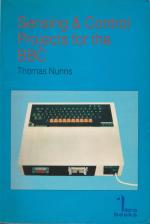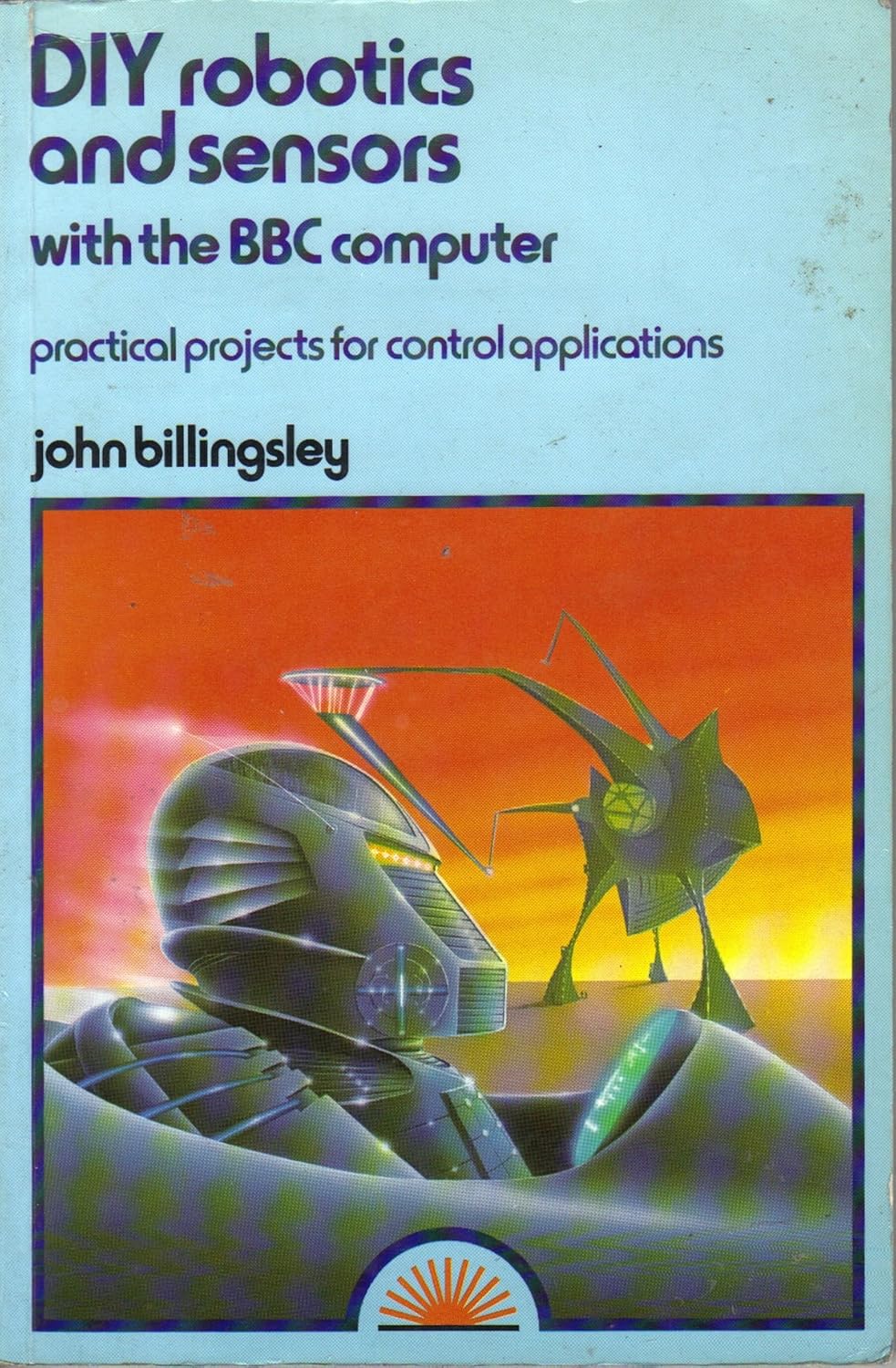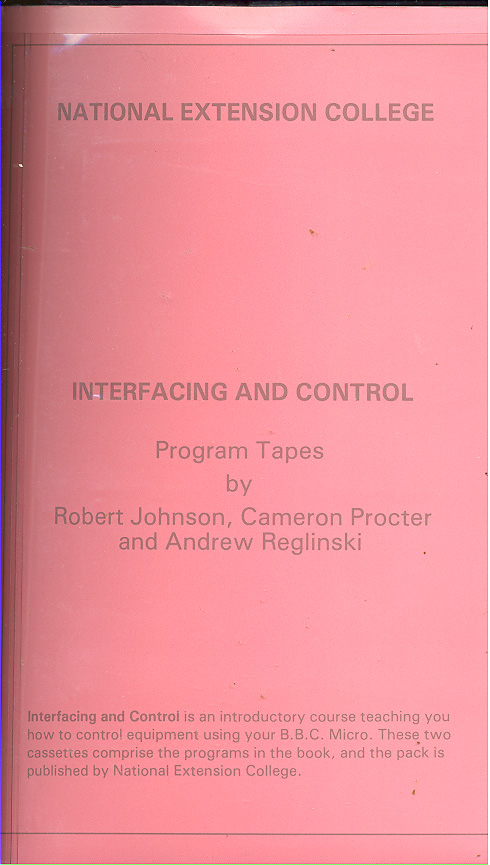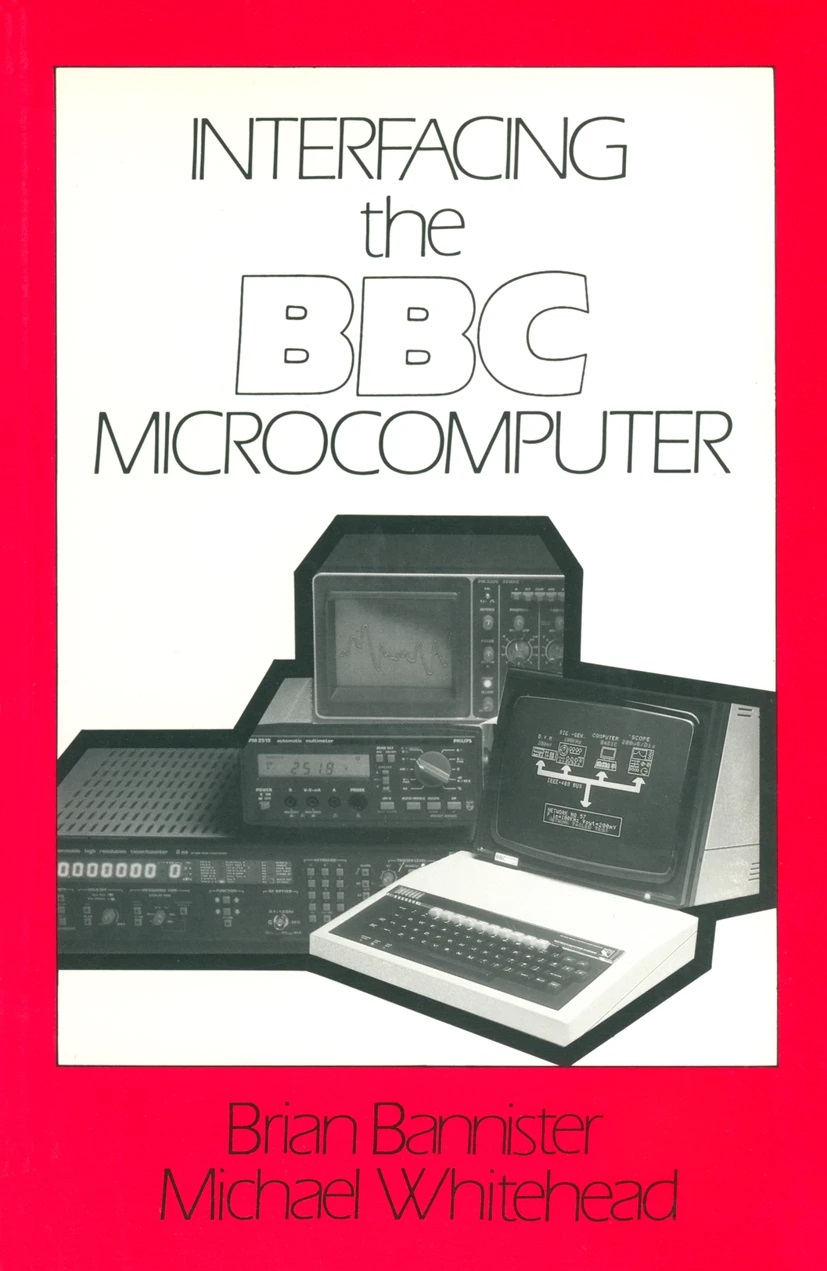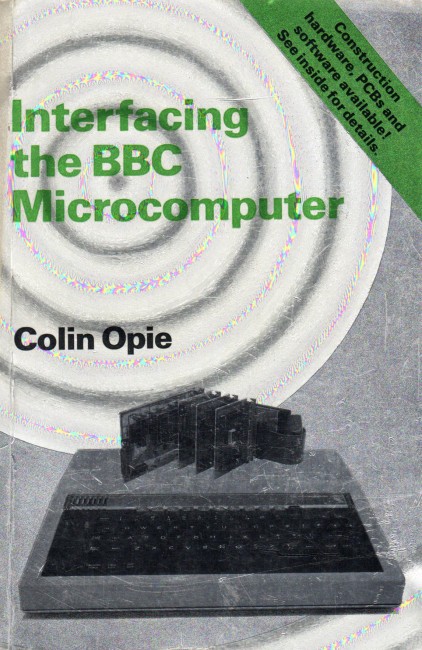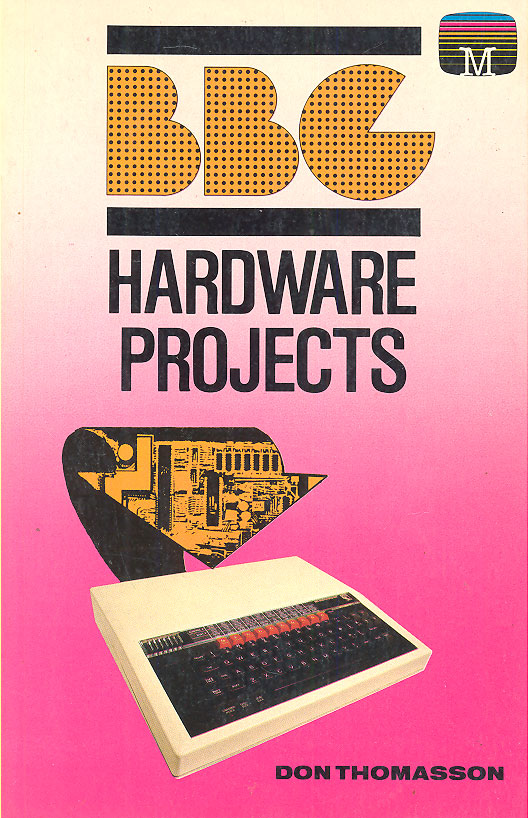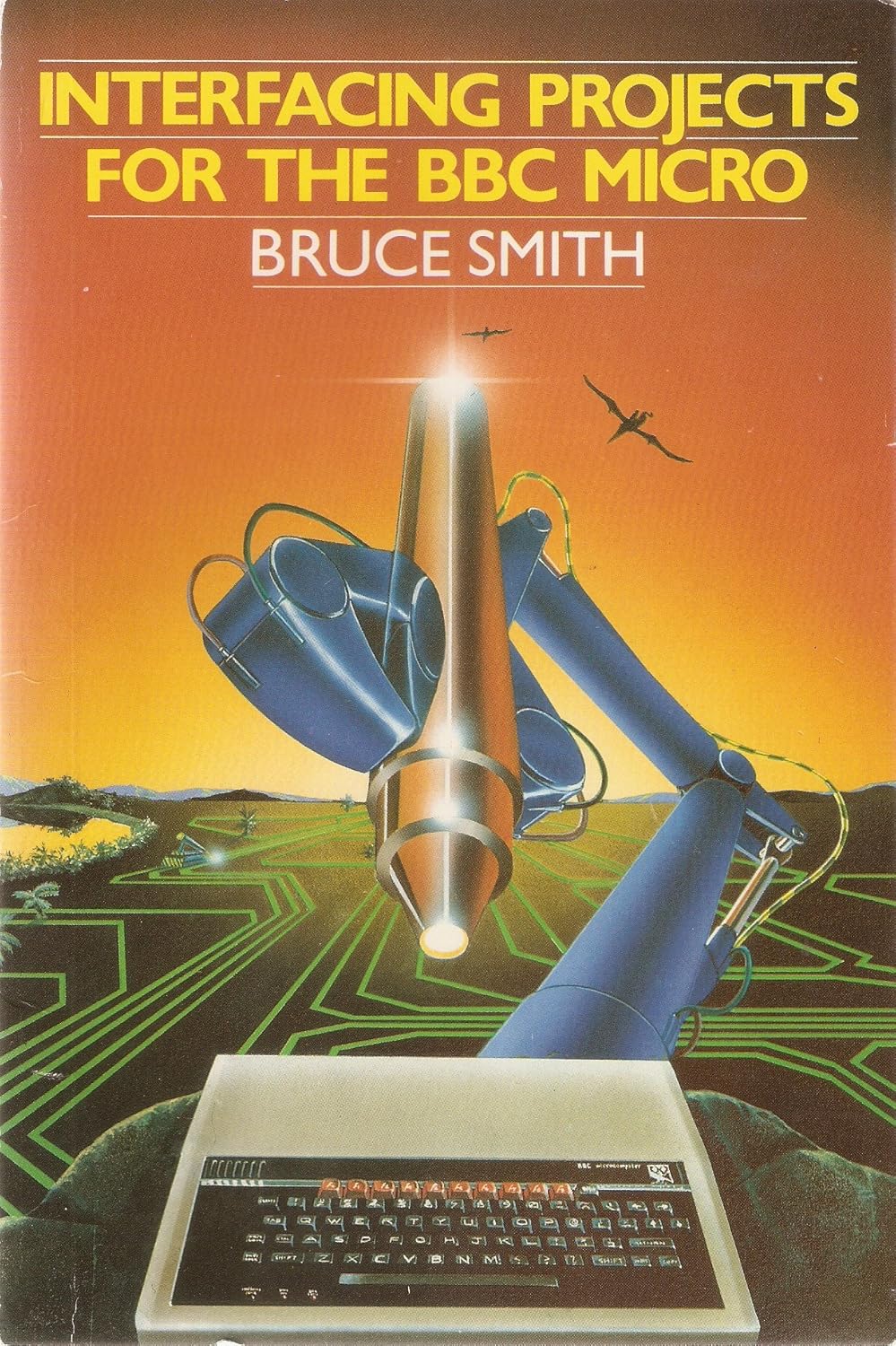
Beebug
 1st October 1985
1st October 1985
Categories: Review: Book
Author: Geoff Bains
Publisher: Micro-books
Machine: BBC Model B
Published in Beebug Volume 4 Number 5
Interfacing The Beeb: Eight Books Reviewed
With our EPROM Programmer Project, we thought it timely to take a look at some of the many books now available on interfacing the Beeb. Geoff Bains has been doing all the reading.
When the BBC Micro was first launched it was much vaunted as having great potential for laboratory work and computer control. The same is true today. Some of that potential has been fulfilled by commercial devices but most is left up to the user with an interest in electronics and skill with a soldering iron.
To help out would-be DIY enthusiasts to construct their dreams, several books have come onto the market. All of these comprise three broad subjects: theory, constructional details, and supporting software. However, the relative proportions of these varies enormously, as do the topics for construction, the depth of discussion, and the skill levels assumed of the reader.
Sensing And Control Projects For The BBC Micro (Micro Books, £5.95)
This book is the simplest of all those reviewed here. The book is divided between projects for the analogue port and those for the user port. The most complex (and appealing) of the ten projects covered is a slot car controller using simple relays and driver chips. The other projects are the like of LED traffic lights and measuring light levels.
Although the projects are, to say the least, uninspiring, the strength of this book is its constructional details. No soldering is required. Everything either screws or clips together. Large lettering, large diagrams and many sections on 'what to do if it doesn't work' mean that this book is ideal for older children or those who have never seen-a piece of wire, let alone a chip, before.
Micro Interfacing Circuits Books 1 & 2 (Babani, £2.25)
These two slim volumes are the opposite extreme from the previous book. There is next to no constructional details here, nor supporting software either.
However, the books cover a wide range of topics - everything from powering LEDs to audio digital filters - and they are meant for other micros as well as the Beeb.
Only the circuits are provided along with a very brief explanation of their workings and pinouts of the various chips and transistors used. Babani books are a well known sight in component shops and their style is pretty uniform, so if you have never come across a Babani electronics book before, the chances are that these are not going to be introductory enough for you anyway.
DIY Robotics And Sensors With The BBC Micro (Sunshine Books, £6.95)
This book is one of the more specialist tomes. The first half is given over to the run of the mill light pens and relay drivers, even a DIY joystick! The second half is where the rather grandiose title takes over. It is mainly devoted to the control of stepper motors.
I get the impression that this book was written in a rush. There is a lot of theoretical background given and even 'experiments' to prove the fundamental operation of stepper motors. The result is an averaged sized book with an awful lot that you don't actually want. The diagrams, too, are just rough sketches. If you are a dedicated electronics fan with a desire to get into robotics, then this book could provide a starting point. However, don't expect too much in the way of in-depth constructional details. This book really just maps out the terrain.
Interfacing And Control On The BBC Micro (NEC, £9.95)
This book is essentially a text book for followers of the relevant NEC course. However, it is sold in 'normal' bookshops and so could well tempt the would-be interfacer. Although the book is fairly comprehensive it would not be recommended for most readers.
For a start all the projects are not DIY boards but based around a ready-made circuit board marketed by the NEC. In addition, the book is a text book and the style does not encourage enthusiasm for the subject. It is also filled with questions and answers which are not really applicable outside the course. That said, the book does offer a reasonable grounding in the use of the Beeb's analogue and VIA ports. However, at nearly £10 the price alone is going to put many off.
Interfacing The BBC Microcomputer (Macmillan, £7.50)
Macmillan's Beeb interfacing book can best be described as one for those well familiar with building their own electronics gadgets but have not yet tried this in the computer field.
The book starts off with a detailed description of the facilities available. There is a chapter on the user port and one on the 1MHz bus, and one on the handling of analogue data. It is only by page 78 that 'some applications' are discussed. These are not so much applications as an extension of the theory with mention of some specific components. No real constructional details are given; it is assumed the reader knows all about that kind of stuff already.
By the time page 103 comes along the applications are all finished and we are back with the theory in the form of the appendices. These mainly give pages and pages of data sheets from various chip manufacturers. For a near-expert in electronics, unfamiliar with the operation and architecture of a microcomputer, this book would no doubt go down well. However, if you intend to actually build something after reading this, and you have not wielded a soldering iron that much before, let alone designed your own circuit boards, you are likely to be disappointed.
Interfacing The BBC Microcomputer (McGraw-Hill, £8.95)
Colin Opie's book follows Messrs Bannister's and Whitehead's in more than just title. It too has large sections at the front (about two thirds of the 200 page book) devoted to the explanation of the detailed operation of the user port, 1MHz bus, and the Beeb in general. However, this time the whole is written in a manner that, for me, was a lot more acceptable and encouraging.
Once the hardware projects (the experimental hardware) is reached it transpires that it is all based around circuit boards that can be purchased, ready made or in kit form, separately (from Watford Electronics). Granted the printed circuit board layouts are given at the end of the book, but it is unlikely that most potential buyers of this book will have the skill or the inclination to start messing around, making their own.
The hardware is advisedly called 'experimental'. There is little in the way of applications here. The boards are potentially very useful but nothing is really said on what and how they could be usefully applied.
Again, this is a book for those already knowledgeable in the field. As a reference work for the electronics hobbyist the friendly style and excellent explanations of the theory of the Beeb's ports it is recommended, but the lack of real application and home appeal spoils the book's chances for most of us.
BBC Hardware Projects (Melbourne House, £8.95)
Keeping the best for last, this is one of the two books in this bunch that can really start you off on an interesting and enlightening foray into the world of electronics.
The book starts off with a theory section. This only lasts for a quarter of the book's 200 or so pages but manages to reveal enough of the workings of the Beeb to keep you going for the rest of the book.
Then there is the constructional section. The range of projects is not very inspired but all are laid out on stripboard and so are eminently attemptable by the average Beeb owner. You don't have to be an electrical engineer to manage these.
The projects cover interfacing to the analogue and user ports. There is a light-detector, voltmeter, relay-driver, mains power controller, numeric keypad, and others. Although these may not seem to be great advances in the field of computer control, you do at least leave this book with a feeling that these things are actually possible; even you could achieve this.
The book does, however, fall down a little on the meagre supporting software. This is a pity as the combination of the excellent Beeb operating system and its interfacing abilities make the system ideal for this kind of thing. Only give half the story and you only have half the fun.
Interfacing Projects For The BBC Micro (Addison-Wesley, £6.95)
Like the previous book this one is a practical work. Some theory is given at the start (including a classic padding chapter on hex and binary!) but you soon get into the meat of the projects. These cover a good range - from light pen to EPROM Programmer (yes, other's have done it too!). Each project is accompanied by an adequate description of how the circuit works, a clear stripboard layout diagram, reasonable constructional details, and plentiful supporting software.
It is difficult to know why this book pleases as it does. The presentation is not very good. It is short (only 130 pages), the diagrams are more in the line of sketches and the program listings faint in places. However, please it does. The style is light enough to communicate the author's enthusiasm for the subject and yet it still remains very informative. There is little here for the absolute beginner, but then the book is not aimed at them. If you have a little experience with a soldering iron (or even a lot) you will not go far wrong with this one.

